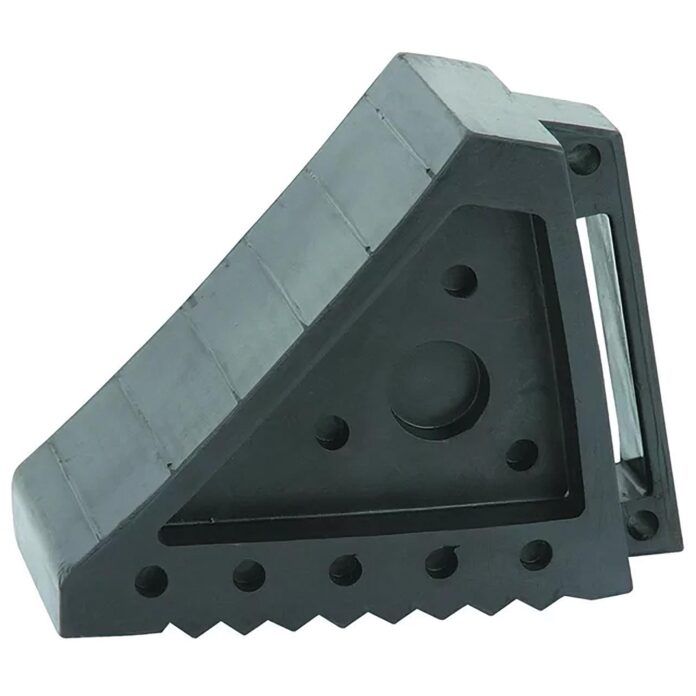As both a line person and private pilot, I’ve seen a good share of the tricks people try to pull on the ramp when they fail to free their airplane from its tiedown or chocks before starting an engine. One common factor is they think no one is watching.
My first example came when I was working the line at the local airport. The FBO had recently changed hands, and was now operated by the same outfit running another small airport about 20 miles up the road. Naturally, management of both facilities “commuted” between them by air.
On the afternoon in question, one of the managers had flown a 172 in for some piece of business or another. While the airplane was still on the ground, a thunderstorm approached and I dutifully went out to secure all the loose airplanes on the tiedowns, including the manager’s 172. The thunderstorm brought its wind and rain, then moved on down the road.
With clear skies, the manager concluded his business, bade us all farewell, walked out, got into the 172, started the engine, rolled a foot or so forward and then came to an abrupt stop, courtesy of the tail tiedown rope. The pilot shut down, climbed out, untied the airplane, started back up and went on his merry way. No one ever mentioned the episode in my presence.
Later, I had my own comeuppance. I had dropped a passenger at an airport along my route and, after bidding farewell and checking weather for my next leg, strolled out to the airplane, a Socata TB20 Trinidad. I checked its fuel and oil levels, then climbed aboard. After engine start, I ran through configuring the panel for the departure and obtained a taxi clearance. I released the brakes and fed in some power, but the airplane didn’t move. More power didn’t resolve the issue. Reluctantly, I shut down and climbed out, removed the nosewheel chocks someone had installed, and climbed back in. The rest of the day was uneventful.
The funny part of all this was someone had done for the Trinidad what I had done many years earlier: secure the airplane without the pilot around. We’re all so used to finding the airplane in the same condition we left it a short time earlier, it’s easy to forego stepping back and looking at it critically, for things like tiedowns, chocks, open access panels and more.
I learned from both those experiences. Now, before every flight, I walk a few feet away from whatever airplane I’m flying and take a long, hard, last look at it before climbing in.
Yes, I have found things I might not have seen otherwise. No, I haven’t had to try jumping a chock since. In my view, it’s not possible if the chock is doing its job.
Have you encountered a situation or hazardous condition that yielded lessons on how to better manage the risks involved in flying? Do you have an experience to share with Aviation Safety’s readers about an occasion that taught you something significant about ways to conduct safer flight operations? If so, we want to hear about it.
We encourage you to submit a brief (500 words) write-up of your Learning Experience to Aviation Safety for possible publication. Each month, Aviation Safety publishes a collection of similar experiences sent to us by readers. Sharing with others the benefit of your experience and the lessons you learned can be an invaluable aid to other pilots.
You can send your account directly to the editor by e-mailing it to [email protected]. Put “Learning Experience Submission” in the subject line; add your name and daytime telephone number at the bottom of the e-mail.
Your report will be considered for publication in the Aviation Safety’s readers’ forum, “Learning Experiences,” and may be edited for style and length. Anonymity is guaranteed if you want it. No one but Aviation Safety’s editor is permitted access to the reports. Your name and telephone number are requested only so that the editor can contact you, if necessary.
While we can’t guarantee your submission will get published, we can guarantee that we’ll closely review and consider using it.
All Learning Experiences submissions become the property of Aviation Safety and may be republished.





I can’t imagine not checking the aircraft! Just because you left it let’s say 20 minutes ago or longer. That something can or did happen to the aircraft while left unattended. It’s crazy not to do a “walk-around” check. I mean actually “seeing” not just “looking”.
To many incendents can and has happen on the flight line or in the parking ramp.
So, why not check? For me there is no “excuse” for not doing a “safety check. You get one chance (hopefully) to get it right).